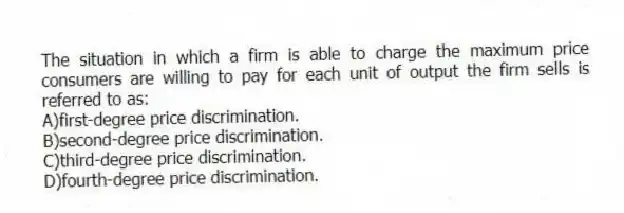
The situation in which a firm is able to charge the maximum price consumers are willing to pay for each unit of output the firm sells is referred to as:
A) first-degree price discrimination.
B) second-degree price discrimination.
C) third-degree price discrimination.
D) fourth-degree price discrimination.
Correct Answer:
Verified
Q13: Assume the inverse demand function for a
Q14: Assume a change in price causes the
Q15: Which of the following is considered a
Q16: The practice of setting price by increasing
Q17: Assuming the demand curve is downward sloping,as
Q19: The suggestion that a seller will try
Q20: When the marginal revenue resulting from a
Q21: As macroeconomic conditions improve and consumers' incomes
Q22: Which of the following would not be
Q23: As the price elasticity of demand for
Unlock this Answer For Free Now!
View this answer and more for free by performing one of the following actions

Scan the QR code to install the App and get 2 free unlocks

Unlock quizzes for free by uploading documents